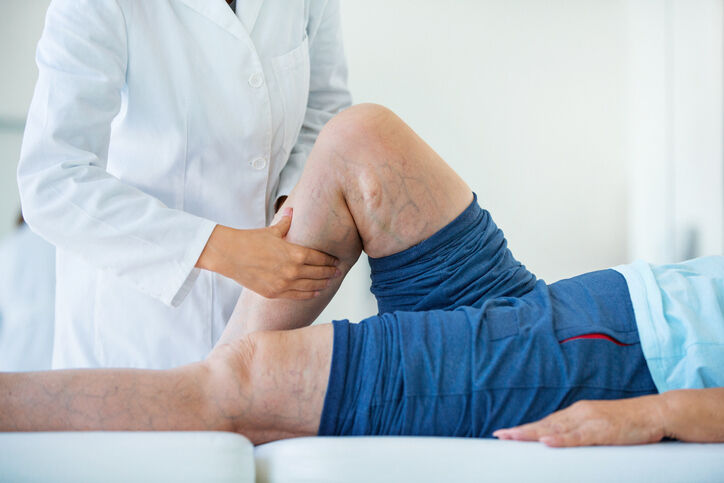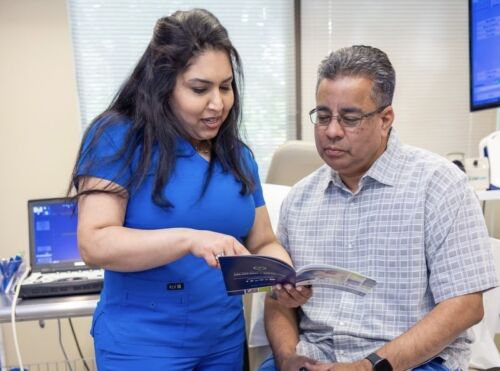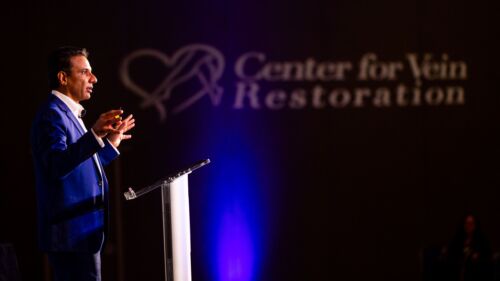Do you think you can’t afford varicose vein treatment? Think again!
As of October 2022, the inflation rate in the U.S. stands at 7.7 percent. To deal with rising costs, many people have curbed their spending. As such, it’s easy to want to delay treating varicose veins. But varicose vein treatment can be affordable, especially if you have insurance, including Medicare and Medicaid.
At Center for Vein Restoration (CVR), we work with our patients to ensure they can afford varicose vein treatments because we believe the benefits of treating vein disease outweighs the costs. Minimally invasive procedures, such as sclerotherapy, thermal ablation, and ambulatory phlebectomy, can be completed within a brief office visit. As such, they are much less expensive than hospital-based medical procedures.
How to pay for varicose vein treatment
Co-pays and deductibles add up. But that shouldn’t deter you from getting treatment for painful varicose veins. Let’s explore how you can afford treatment and eliminate those swollen veins.
Insurance. Check with your insurance carrier, but it will likely pay for treatment. Because of the pain, swelling, and complications from varicose veins, treatment is considered medically necessary. CVR accepts most insurance plans, including Medicare and Medicaid. We’ll work with you on how much you may have to pay out of pocket, and we’ll also obtain pre-approval and submit all claims on your behalf.
Payment plan. Once the expected out-of-pocket costs are established, CVR can develop an affordable payment plan for you. We’ll strive to make sure your payments stay within your budget. Combined with your insurance coverage, you should find that varicose vein treatment is well within your financial means.
Flexible spending account. Check with your employer, as you may have a flexible spending account to withdraw funds for out-of-pocket healthcare costs.
Why you shouldn’t delay treatment
Now that you know how affordable varicose vein treatment is, you have no reason to delay it. Postponing treatment may only set you up for more severe and costly complications.
Swollen veins are easily bruised and scratched, resulting in excessive bleeding. Left untreated, the skin around varicose veins can develop into ulcers that are difficult to heal. The most serious complication is a blood clot in the vein. As blood pools in the vein, blood cells clump together and form a clot. If the clot travels from the leg to the lungs, it could cause a potentially life-threatening pulmonary embolism.
After treatment, you’ll need to keep your veins healthy to avoid having to treat them again. Wear compression stockings if you sit or stand for long hours to support blood flow. Elevating your legs after a long day at work helps, too.
You’ll also want to consider changing your diet. Avoid salty foods that lead to water retention and more swelling. To counteract bloating, eat potassium-rich foods such as almonds, yogurt, lentils, oranges, and potatoes. Other excellent diet choices are high-fiber foods, including beans, broccoli, and whole grains.
Foods packed with flavonoids boost circulation and reduce blood pressure in the veins. These include colorful fruits and vegetables such as spinach, bell peppers, strawberries, and apples.
Lastly, remember to exercise! Nothing is better at getting blood pumping than a brisk walk or bike ride. When blood flows smoothly, your veins are healthier and won’t need treatment.
Let CVR help you pay for varicose vein treatment
At CVR, we believe every patient should be able to afford varicose vein treatment, so we make it our mission to ensure our patients get the treatment they need at an affordable price.
Want to learn more about what we can do for you? Contact one of our offices today to schedule a consultation, or call 240-965-3915 to speak to a representative. You may also schedule online at your convenience.

 About Vein Disease
About Vein Disease
 Spider Veins
Spider Veins
 Varicose Veins
Varicose Veins
 Vein Disease Treatments
Vein Disease Treatments
 Treating Spider Veins
Treating Spider Veins
 Treating Varicose Veins
Treating Varicose Veins
 About Us
About Us
 Patient Resources
Patient Resources
 Physician Resources
Physician Resources


